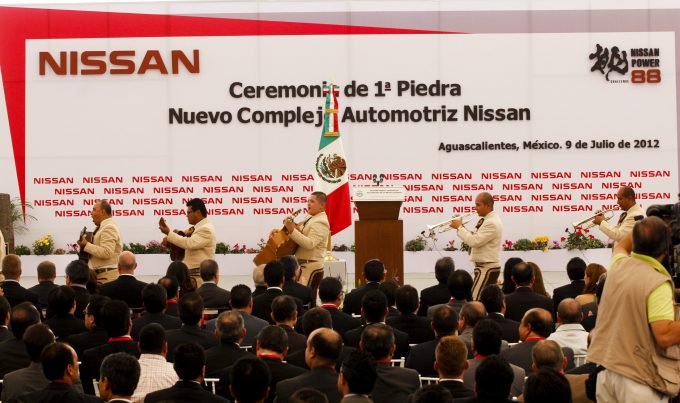Hurricane Beryl wreaks havoc as it hits US Gulf coast and moves inland
Liner agency Kestrel and Europe Caribbean Line (ECL) are offering space on a sailing to ...
FDX: ABOUT USPS PRIVATISATIONFDX: CCO VIEWFDX: LOWER GUIDANCE FDX: DISRUPTING AIR FREIGHTFDX: FOCUS ON KEY VERTICALFDX: LTL OUTLOOKGXO: NEW LOW LINE: NEW LOW FDX: INDUSTRIAL WOESFDX: HEALTH CHECKFDX: TRADING UPDATEWMT: GREEN WOESFDX: FREIGHT BREAK-UPFDX: WAITING FOR THE SPINHON: BREAK-UP ALLUREDSV: BREACHING SUPPORTVW: BOLT-ON DEALAMZN: TOP PICK
FDX: ABOUT USPS PRIVATISATIONFDX: CCO VIEWFDX: LOWER GUIDANCE FDX: DISRUPTING AIR FREIGHTFDX: FOCUS ON KEY VERTICALFDX: LTL OUTLOOKGXO: NEW LOW LINE: NEW LOW FDX: INDUSTRIAL WOESFDX: HEALTH CHECKFDX: TRADING UPDATEWMT: GREEN WOESFDX: FREIGHT BREAK-UPFDX: WAITING FOR THE SPINHON: BREAK-UP ALLUREDSV: BREACHING SUPPORTVW: BOLT-ON DEALAMZN: TOP PICK

Near-shoring offers South American countries multibillion-dollar opportunities, but should not be seen as a magic bullet in the fight against supply chain climate emissions.
EVP commercial and product development at Green Worldwide Shipping Greg Bollefer is among advocates calling for an upturn in near-shoring within the Americas, something commentators suggest could generate as much as $72bn for Latam countries.
“Working with neighbours across the Americas is not new, consistent trade agreements over the years have created solid commercial foundations,” Mr Bollefer told The Loadstar.
“And the economic benefits of near-shoring remain as strong as ever – proximity, quality, control, communication, cultural alignment and, depending on the programme, cost advantages.”
Mr Bollefer believes importers and exporters are among those who could benefit most, and has suggested a regulatory trade review and production of sourcing profiles.
Such a move, he said, would allow companies to understand how a near-shoring programme could impact a business’s bottom line and lead to an increase in the practice, particularly in the aftermath of the pandemic and strained trade relations with China.
“Near-shoring isn’t limited to sourcing and manufacturing, so we need to understand not only the industry, but the operational scope it is being applied to,” Mr Bollefer explained. “It is fair to say that, as we head into the third year of the pandemic and resulting economic disruptions, companies have been making both short- and long-term changes to their supply chains through near-shoring and other operational alternatives.”
Among the big names to have upped their use of near-shoring, are Boeing, Nike and Samsung, but other commentators believe the uptake less-pronounced than hoped.
Head of logistics at Olicargo Americo Ribeiro believes the pace near-shoring has caught on has “not really been as fast” as he would have expected, but Mr Bollefer believes: “Smart supply chain managers understand that production shifts are a natural part of the economic cycle – however, making changes isn’t simple.”
“Depending on the product, industry and manufacturing capacity, nearshoring opportunities and the decision to make production changes are weighed against other factors such as quality and demand.”
One factor Mr Bollefer said should be carefully considered before moving to near-shoring is the environmental benefit offered. Several reports, along with his own experience with clients, have suggested that bringing production closer to final markets, cutting transport miles, will inevitably result in a reduction in emissions.
“Some emphasise that shorter distances in supply chain transport reduce a company’s carbon footprint,” he said. “However, we know this is not always the case. Moving production to a country with an energy grid heavily dependent on fossil fuels, for example, may end up increasing a company’s carbon emissions.
“I believe the greater long-term benefit that will come from near-shoring will be the pressure to convert near-shoring energy infrastructure to cleaner, more sustainable energy sources.
“For Green Worldwide Shipping, changes in supply chain shifts only lights a fire under the ability to find creative solutions for our customers. Forwarders that can only offer fixed solutions instead of real supply chain insights will most likely be left behind.”
Comment on this article